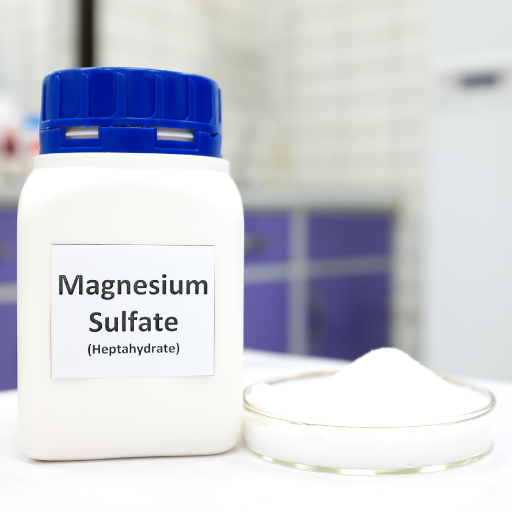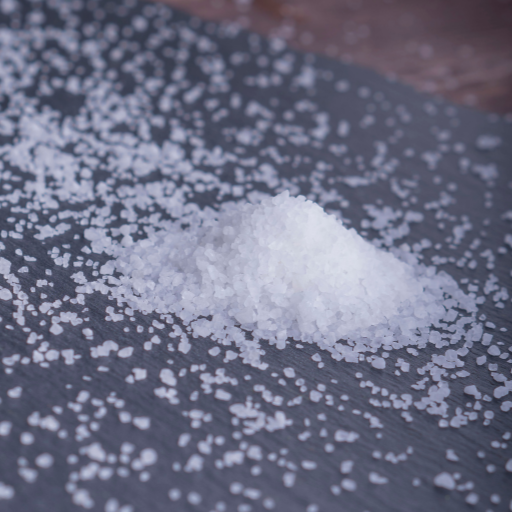Chemically known as magnesium sulfate, Epsom salt has caught the attention of gardeners due to its unique properties and benefits. As a naturally occurring mineral compound, this substance is very important in plant health because it provides essential nutrients that help in growth, seed germination, and general plant vigor. By having too much magnesium content, the Epsom Salt helps produce chlorophyll which makes foliage greener and enhances photosynthetic efficiency. It also enables the absorption of other crucial nutrients, such as nitrogen and phosphorous, thereby improving root development and water retention. This article will explore specific nutrients in Epsom salts, how they work, and their practical uses for enhancing plant health and yield.
The Essential Components of Epsom Salt

Epsom salt is composed of two main elements, magnesium (Mg) and sulfate (SO₄). Magnesium is an important macronutrient that plays many key roles in plants’ physiology, especially photosynthesis. It functions as a central atom in the chlorophyll molecule which helps to absorb light energy. Moreover, it activates numerous enzymatic systems that control the synthesis of carbohydrates and proteins, thereby improving plants’ overall metabolism.
On the other hand, sulfate is vital in the production of amino acids and proteins, besides aiding in the synthesis of vitamins necessary for plant growth. This makes it easier for plants to survive under harsh environmental conditions like drought or diseases because it promotes effective nutrient uptake and enhances cellular activities. Together, magnesium and sulfur in Epsom salts have a synergistic effect, which ensures healthy plant growth.
Understanding magnesium sulfate and its benefits
Tech-wise, specific technical features support various ways through which Epsom salts, commonly known as magnesium sulphate, enhance plant health. Primarily, most research is on optimum levels for 0.2%-0.5% leaf tissue concentration for maximal efficiency in photosynthesis, while other studies have shown that Mg levels above 0.5% could lead to near complete inhibition of biomass accumulation and yield.
The same applies to its counterpart sulfate, which helps synthesize essential amino acids as well as proteins, among others, resulting in what is termed plant growth factor’s vitamins, ensuring high nutrition content within these crops, hence increased yields upon proper practice measures taken during planting period [4]. In addition, Epsom salts improve nutrient uptake by fostering root proliferation, thus enhancing NPK absorption efficiencies that greatly impact production outcomes.
Magnesium Sulfate and its role in mitigating stress: Furthermore; however; Additionally; Therefore; Nevertheless; Conversely; Thus
Furthermore, magnesium sulfate makes it possible for plants to withstand such unfriendly conditions as salty soils since the cellular structure and functions will be maintained. Research has shown, for example, that when magnesium sulfate is added to plants growing under stress conditions such as salinity or drought, their recovery rate increases significantly with normal rates ranging between 20-40 pounds per acre (Havlin et al., 2005). This means adding magnesium sulfate in soil treatments can be an effective way of making crops more resilient while promoting sustainable agriculture.
How magnesium contributes to plant health
- Chlorophyll Formation: Magnesium is one of the main elements that compose chlorophyll, a green pigment responsible for photosynthesis in plants. It is worth noting that chlorophyll synthesis requires appropriate amounts of magnesium in leaf tissues, ranging from 0.2% to 0.5%, thus directly influencing photosynthetic activity and overall plant productivity.
- Nutrient Uptake Efficiency: The uptake efficiency of essential minerals by plants, especially nitrogen and potassium, can be improved through magnesia sulpha applications owing to better permeability of root membranes due to increased root development. This, in turn, facilitates mineral absorption into vital parts within the whole organism, resulting in healthier physical states because of efficient uptake [6].
- Protein Synthesis: Magnesium ions act as activators for enzymes directly related to protein synthesis, including amino acid processes and others necessary for biological activities such as protein formation. However, it should be maintained between 0.1% and 0.4% since this would aid in providing an environment where there are enough proteins required during growth stages.
- Stress Tolerance: Besides mitigating abiotic stressors like drought and high salt levels, magnesium is also involved in maintaining cell functions, thereby ensuring physiological processes still occur normally amidst adversities. Recommended application rates range usually from 20 – 40 lbs/acre, but this may vary depending on the specific soil type [21].
- Photosynthetic Efficiency: The direct presence of magnesium associates with the efficiency of the photosynthetic pathway since it is required for different enzymatic functions responsible for carbon fixation. More efficient photosynthesis will lead to more biomass accumulation and higher crop yields.
The role of sulfur in plant development
- Essential Nutrient Component: Sulfur is a vital macronutrient without which plants cannot grow properly. It takes part in amino acids, proteins, and enzymes, thus being crucial in many physiological processes such as metabolism and structural development.
- Amino Acid and Protein Synthesis: Sulfur is key for producing cysteine and methionine; both are sulfur-containing amino acids that are essential for protein structure and function. Appropriate amounts of sulfur promote protein synthesis, which is important to any plant’s general vitality and productivity.
- Synthesis of Vitamins and Coenzymes: Sulphur helps in the formation of certain vitamins such as biotin or thiamine,and various coenzymes involved in several biochemical reactions inside a plant body. This function works well during active growth time to regulate metabolism and produce energy.
- Chlorophyll Formation: Sulfur plays a role in chlorophyll synthesis needed for photosynthesis. If there is enough sulfur available, optimal chlorophyll production can be maintained so that light can be absorbed more efficiently while solar energy converted into chemical energy for growth or yield purposes.
- Disease Resistance: Sulfur boosts plants’ natural defense against many pathogenic agents by producing phytoalexins, which are antimicrobial substances required when there is a fungal or bacterial infection. Hence, sulfur safeguards the quality of life within a given vegetation.
- Soil Health Improvement: Microbial activity is improved, while some other nutrients’ availability becomes enhanced—all this because sulphur fosters soil health. Sulphur enhances soil structure, water holding capacity through organic matter decomposition, and nutrient cycling, which are of paramount importance to plant growth.
- Regulation of Plant Hormones: Sulfur is involved in the synthesis of some plant hormones, such as auxins and cytokinins, which control growth and development processes. Correct amounts of sulfur maintain hormonal balance for better growth patterns and crop quality.
How Magnesium from Epsom Salt Affects Plant Growth

Epsom salt is a good source of magnesium, also known as magnesium sulfate from which all plant growth hinges on various physiological processes. First, magnesium in chlorophyll molecules is essential for photosynthesis. This can be enabled by having enough amounts of the mineral to ensure that the plants harvest maximum light energy from the sun. Secondly, magnesium activates enzymes involved in ATP production and nitrogen metabolism, which are necessary for synthesis of important compounds needed for healthy plants.
Moreover, it helps facilitate the intake of other nutrients, specifically potassium and phosphorus materials, into plants by enhancing their overall ability to absorb nutrients. It improves root development, hence increasing robustness. Also, Epsom salts can mitigate symptoms related to a deficiency in magnesium, such as poor growth and yellowing leaves, thus leading to increased outputs during drought or disease periods. Magnesium helps correct deficiencies and has been shown to enhance chlorophyll content thereby improving plant vigor during harsh conditions like droughts or high winds that would otherwise lead to decreased crop yields.
Enhancing chlorophyll production with magnesium
Optimizing plant photosynthesis and overall health requires proper enhancement of chlorophyll production with the help of magnesium. Magnesium plays a central role in chlorophyll synthesis; thus, its levels determine how much pigment concentrations there will be on leaves, leading to greener leaf coloration and more sunlight absorption . In the presence of this element plants maintain their capacity for producing chlorophyll effectively thereby improving photosynthetic efficacy and biomass accumulation. Besides addressing shortages, it stimulates further chlorophyll production by maintaining the structure of chloroplasts. The increase in chlorophyll content corresponds directly to higher conversion rates from light energy into chemical energy, resulting in faster growth and increased crop yield potential. Thus, monitoring the soil’s level regularly along with foliar application could help optimize the production of chlorophyll, which could result in strong, healthy plants.
How magnesium improves nutrient absorption
Magnesium is an important nutrient in plants that supports key physiological processes thereby improving the uptake of nutrients. The presence of magnesium as a central atom in chlorophyll enables plants to efficiently trap sunlight which is converted into chemical energy. This energy is necessary for active transport of nutrient molecules into plant cells especially those at the roots. It also affects cell membrane permeability, thereby enhancing the uptake of essential nutrients such as potassium and calcium. It also aids in adenosine triphosphate (ATP) synthesis, a universal energy molecule responsible for driving multiple nutrient absorption processes. Eventually, adequate amounts increase the capacity of plants to take up essential elements; hence, this leads to increased growth and resistance.
Can Epsom Salt Magnesium Strengthen Plant Structure?
Epsom salts’ magnesium can really strengthen plant structure since it contributes to general health and rigidity of plants. It forms part of lignin, which is a fundamental component in plant cell walls that provides structural support and tougher conditions. Also this element helps in modifying proteins that are known to increase the rate at which cells multiply hence enabling it act as catalyst during mitosis or cytokinesis process among other things.Effective chloroplasts are possible only if enough magnesium levels are available so that plenty of chlorophyll will be produced through these cells with green coloration due to more light-trapping properties resulting from good chlorophyll synthesis. Moreover, Epsom salt magnesia reduces stress factors such as drought or lack of nutrients which lead better crop development because they make them stronger; again they provide strong resilience against harsh conditions. Frequent application of Epsom salt during gardening improves overall plant architecture and firmness
The Importance of Sulfur in Epsom Salt for Plants

The essentiality of sulfur to Epsom salt (magnesium sulfate) has a great impact on the general health and growth of plants. This component is required in the synthesis of certain amino acids which are essential for proteins that form building blocks for plant growth. Furthermore, sulfur also aids in formation of enzymes and coenzyme involved in various biochemical reactions that support cellular metabolism. It also helps the photosynthesis process to be more efficient by involving itself in chlorophyll, thus increasing the capture energy and enhancing the whole vitality of the plant. Sulfur helps improve nutrient absorption, such as nitrogen and phosphorus, leading to a balanced growing environment. Besides, it enhances plants’ ability to produce secondary metabolites like flavonoids and glucosinolates which discourage attacks from pests as well as diseases. Amending soil health through the introduction of sulfur via Epsom salt can lead to more robust plant development as well as greater nutrient availability.
How sulfur aids enzyme function
Sulfur plays a very crucial role with regard to enzymatic activities when used a cofactor for different enzymatic reactions. A couple of enzymes especially those involved in metabolic pathways contain some amino acids having sulphur like cysteine and methionine hence requiring sulphur so that they can maintain their catalytic activity and structural integrity. This structural role is vital since disulfide bonds formed by cysteine residues help stabilize protein structures to enable enzymes to maintain their conformational correctness, thus ensuring high efficiency in their functioning. Also, sulphur is responsible for producing coenzymes used during both energy transfer and biogenesis. In this way, its presence will heighten the activity rate of an enzyme, thereby promoting optimum levels of specific biochemical processes within a plant, which promotes a growth rate dependent upon how much nutrients are available.
The role played by sulfur in constructing amino acids
Sulfur is central to amino acid biosynthesis, especially during cysteine and methionine formation, two sulfur-containing amino acids that are needed in protein synthesis and cellular metabolism. In this case, cysteine is derived from serine precursor through a process involving the use of sulfur which demonstrates its importance in the formation of proteins rich in this amino acid. On the contrary, methionine acts as a point of departure for other kinds of amino acids generation thus contributing to methylation events, which help regulate metabolic pathways and gene expression. Consequently, the presence of sulfur not only increases structural diversity within proteins but also influences certain physiological processes like antioxidant defense systems, hence emphasizing its importance in amino acid biosynthesis while supporting cell function as a whole.
Can Epsom salt sulfur enhance root growth?
As shown by research conducted on plants, it has been established that sulfur contained in Epsom salt, commonly known as magnesium sulfate, is capable of enhancing root development. Magnesium component is vital for chlorophyll production and enzyme functioning whereas sulphur contributes to the formation of amino acids and proteins required for plant growth. Many studies have suggested that applying Epsom salt can facilitate overall nutrient uptake and healthier root systems by aiding absorption of crucial elements like nitrogen and phosphorous into plants (Marschner 2011). Additionally, it has been observed that where there is Epsom Salt, there may be less damage to a plant due to stress, resulting in healthy roots encouraging vigorous development. Nonetheless, these rates must be balanced since excess usage may result in imbalanced nutrients within soil, leading to a diseased state, thereby reducing crop yield.
Epsom Salt’s Role in Photosynthesis and Energy Production

Magnesium sulfate, also known as Epsom salt, plays an important role in photosynthesis and plant energy production. The absorption of sunlight is made possible by magnesium, which is vital for chlorophyll molecules and hence, fundamental in the process of photosynthesis. This light energy conversion into chemical energy thereby producing glucose and releasing oxygen as a by-product takes place through this absorption. Additionally, magnesium acts as co-factor to numerous enzymatic reactions thus affecting ATP synthesis- the cell’s energy currency. Meanwhile, sulfur which is less emphasized about its function also participates in building essential proteins and enzymes that are vital for metabolic activities within the plant. For instance, a combination of these salts boosts photosynthetic efficiency and general plant vigor, promoting vigorous growth and increased yield.
How does magnesium influence photosynthesis efficiency?
Essentially what makes magnesium greatly affect the efficiency of photosynthesis are its role in chorophyl production and enzyme activation. The central atom of the pigment responsible for capturing light is magnesium; therefore, having low levels of it causes reduced chlorophyll, leading to poor photosynthesis by plants. It has been noted that adequate amounts of magnesium enhances this pigment’s ability to harvest light as well as effective utilization of light energy leading to improved rates of both carbon fixation into sugar during day time (Calvin cycle) stages and photorespiration at night time during dark reaction phase.< Moreover, this compound serves as a necessary cofactor for some enzymes involved in calvin cycle whereby carbon dioxide becomes glucose after every dark period.Some enzymes working on these two processes, like carboxylation, lead to a much higher absorption rate for CO2 from air, while sugar synthesis has an endothermic effect on respiration speed; hence, more output rates are observed.Hence, achieving the optimum amount of Mg ions must be kept up if maximum potentiality towards biomass accumulation can be reached.
The connection between sulfur and plant respiration
Plant respiration depends on sulphur due to its presence in vital protein and enzyme cofactors that are responsible for metabolic processes. For instance, it is required in the synthesis of certain amino acids, such as cysteine and methionine, which are crucial building blocks for respiration’s proteins. On the other hand, sulfur also participates in making coenzymes that aid Kreb’s cycle, a central energy-generating pathway. Sufficient amounts of sulphur have been reported to enhance respiratory efficiency when transferring energy so as to achieve optimum growth and development. Inadequate amounts of this element can result into poor respiration thus making it unable to produce ATP leading to poor general healthiness and less yields.
Can Epsom salt boost a plant’s energy levels?
Based on my research on the benefits of Epsom salt for plants, I found out that, indeed, it can increase the energy levels in a plant majorly due to its magnesium and sulfur content. As previously mentioned, chlorophyll production & photosynthesis (sources of energy) are magnesium-dependent activities. Adding Epsom salts through soil or leaf spray increases Mg concentration, hence promoting the plant’s ability to absorb sunshine converting into chemical form.Such as enhancing metabolic reactions involved in producing more essential proteins since filling up gap between Mg ions leads to yield improvement.In summary, proper use of this compound can help improve well-being state and well-being condition, consequently resulting in higher crop yields as well as improved growth patterns.
How Epsom Salt Nutrients Affect Different Plant Types

There are different kinds of plants that Epsom salt nutrients affect in distinct ways. Magnesium is involved in the synthesis of chlorophyll, which makes vegetable leaves like spinach and lettuce to be darker green, thus enabling higher photosynthesis capacities. Tomato and pepper fruits also require adequate magnesium content for proper flower and fruit set that enhances overall productiveness. Moreover, for instance, in basil and mint varieties of aromatic herbs, sulfur facilitates the production of essential oils, thereby enhancing their taste as well as strength. Magnesium contributes to bright colors, while sulfur helps make plants strong so they can withstand harsh environmental conditions, among other things. Ultimately, therefore, through specifically targeting each plant type’s unique requirements, its use can be tweaked towards maximum gains, leading to improved garden productivity.
Advantages of Epsom salt on flowering
Epsom salt has numerous advantages for flowering meaning that it increases growth rate and vitality. According to my observations, Epsom salt application leads to more vivid flowers because there is an increase in magnesium that allows chlorophyll production, hence facilitating the photosynthesis process. For example, I have noticed that it promotes fuller blooming through fostering the formation of crucial nutrients required during blossoming process. Also, Epsom salt contains sulfur that helps flowers get stronger against various environmental adversities, including pests attacks.The result is not only vibrant blooms but also a blooming garden setting if you use Epsom salt properly.
How do vegetables respond to Epsom salts?
Vegetables generally show a positive response upon receiving Epsom salts due to their high magnesia and sulfur levels. This mineral element supports the process of photosynthesis by raising chlorophyll levels, hence increasing crop yield rates for tomatoes or peppers, among other crops with such characteristics. Significantly, apex expansion relies on magnesia intake into plant roots as nitrogen metabolism has been enhanced through making it more efficient during nutrient uptake. Meanwhile, sulphur is instrumental in the formation of specific amino acids and enzymes, playing a key role in the metabolism of plants, resulting in better flavors and nutritional quality of vegetables. In addition, Epsom salts may enhance germination as well as make seeds tolerate adverse conditions, thereby increasing the likelihood of a bigger harvest at the end. Therefore, there is an increased production of healthy vegetables with superior qualities when Epsom salt is carefully utilized within farming systems.
Can fruit bearing plants benefit from Epsom salt?
Epsom salt, being rich in magnesium and sulphur, can be very useful for the growth of fruiting plants. Most studies and experts have agreed that magnesium plays a significant role during photosynthesis, which contributes to fruit development and general plant well-being. Examples include application of Epsom salt to strawberries and tomatoes which increases their quality as well as yield thus making them more nutritious. Similarly, sulfur helps in synthesizing essential oils and other aromatic compounds that are present within fruits enhancing their taste. The use of these salts not only facilitates flowering but also supports healthy growth of fruits, hence leading to huge yields. This, therefore, implies that applying Epsom salts as part of the fruit cultivation routine leads to improved harvests both in quantity and quality.
Addressing Nutrient Deficiencies with Epsom Salt

Epsom salt is an ideal answer to plant nutrient deficiencies, especially those involving magnesium and sulfur. Epsom salt can be a good solution when plants show some signs of nutrient deficiency like yellow leaves or poor growth. Supplementation with magnesium helps affected plants regain their green vigor since it is essential for photosynthesis and nutrient uptake, as well as being a core part of the chlorophyll molecule. Also, sulfur plays a role in many plant metabolic processes and enhances the synthesis of important proteins and enzymes. The technique involves dissolving Epsom salts in water and applying it straight to the soil or by foliar spraying thus ensuring fast absorption and prompt improvement. Horticultural experts recommend this practice for home gardens and large farming systems to enhance plant health and prevent diseases through averting nutritional problems.
Magnesium deficiency symptoms
- Interveinal Chlorosis: This causes yellowing between veins on older leaves while leaving the veins themselves green. It indicates that there is not enough magnesium for the synthesis of chlorophyll.
- Leaf Curling: Older leaves curl upwards at the margins due to magnesium’s inability to reach the entire leaf structure properly. This abnormal leaf growth pattern usually leads to reduced overall leaf size.
- Premature Leaf Drop: Older leaves may fall off before time as magnesium levels continue dropping. Such premature leaf drop drastically affects plant vitality and yields.
- Weak Stem Structure: When magnesium is insufficient, stems become weak and elongated, leading to reduced stem strength and, hence, more vulnerability to stress-related damage from the environment.
- Poor Fruit and Flower Development: The lack of sufficient Mg hinders proper flower production and fruit set, resulting in lower-quality flowers with fewer fruits, which in turn diminishes the final harvest yield.
- Brown Edges on Leaves: In severe cases, these necrotic brown spots or edges may develop along leaf margins signalling advanced symptomatology stress resulting from paucity of Mg.
How to recognize sulphur deficiency and fix it
Several key symptoms can be used for the identification of sulfur deficiency in plants. The most visible sign is Uniform Yellowing: Younger leaves tend to appear pale yellow all over the leaf unlike magnesium-deficient plans where chlorosis occurs between veins. Stunted Growth is also a symptom since sulfur is essential for the synthesis of amino acids and proteins, which contribute to overall reduced plant size. Delayed Maturity may occur; plants lacking sulfur might take longer before they reach maturity compared to those having normal levels.
To rectify the situation with sulfur, it is important to undertake soil testing to ascertain low level of sulfur prior to any application of amendments.Sulfur Fertilizers that include ammonium sulfate, potassium sulfate, or elemental sulfur can also be applied. This requires applying rates consistent with soil pH and moisture conditions so that crops can effectively absorb them. In addition, the incorporation of organic matter such as compost would enhance the availability of sulfur, thus maintaining general soil fertility. Adequate surveillance on the health status, along with continued monitoring, will prevent future deficiencies through routine soil tests being carried out.
Does Epsom salt help in preventing other nutrient-related issues?
Truly, Epsom salt, which is mainly magnesium sulfate, can really help prevent some nutrient-related problems, especially those related to lack of this element. Epsom salt application leads to more chlorophyll production that improves photosynthesis and overall greening of the plant. It also increases the absorption of other necessary nutrients like nitrogen and phosphorous hence improving plant health. Nonetheless, despite it being able to counteract magnesium shortages, Epsom salt does not qualify as a complete fertilizer on its own. A soil test will identify present nutrient amounts so that any shortage can be addressed holistically rather than just relying on Epsom salt alone. Excessive use may create imbalances in nutrient ratios resulting in added strain or toxicity in plants. To maximize garden well-being therefore, one must include Epsom salt as part of an integrated nutritional program
Reference sources
-
University of Minnesota Extension
- Source: Coffee grounds, eggshells and Epsom salts
- Summary: This source explains that Epsom salts contain magnesium sulfate, which is often promoted as a garden cure-all. It provides insights into the role of magnesium in plant health.
-
National Gardening Association
- Source: Fertilize with Epsom Salts
- Summary: The article details that Epsom salts are composed of hydrated magnesium sulfate, highlighting the importance of magnesium for seed germination and plant growth.
-
Washington State University
- Source: Epsom salts
- Summary: This document discusses Epsom salts as magnesium sulfate, emphasizing its reputation as a beneficial nutrient for gardens and plants, while also addressing various claims about its effectiveness.
Frequently Asked Questions (FAQs)
Q: What nutrients does Epsom salt provide to plants?
A: Epsom salt provides magnesium and sulfur, essential nutrients that support various plant functions, including chlorophyll production and enzyme activation.
Q: How does magnesium in Epsom salt benefit plants?
A: Magnesium plays a crucial role in photosynthesis by helping plants produce chlorophyll, which is vital for converting sunlight into energy.
Q: Can sulfur in Epsom salt improve soil quality?
A: Yes, sulfur helps lower soil pH levels and aids in the formation of essential amino acids, improving overall soil health and plant growth.
Q: Is Epsom salt safe to use on all types of plants?
A: Epsom salt is generally safe for most plants, but it’s important to use it correctly and in the right amounts to avoid over-fertilization.
Q: How often should I apply Epsom salt to my plants?
A: The frequency of application depends on the plant type and its specific needs, but typically, Epsom salt can be applied every two to four weeks.
Q: Can Epsom salt correct nutrient deficiencies in plants?
A: Epsom salt can help address magnesium and sulfur deficiencies, improving plant health and preventing issues like yellowing leaves and stunted growth.
Q: What are the signs of magnesium deficiency in plants?
A: Symptoms of magnesium deficiency include yellowing leaves, particularly between the veins, and poor growth, especially in older leaves.
Q: Can I mix Epsom salt with other fertilizers?
A: Yes, Epsom salt can be combined with other fertilizers, but it’s important to balance the nutrients to avoid over-fertilization.
Q: How do I apply Epsom salt to my plants?
A: Epsom salt can be applied by dissolving it in water for a foliar spray or by mixing it into the soil around the base of the plants.






